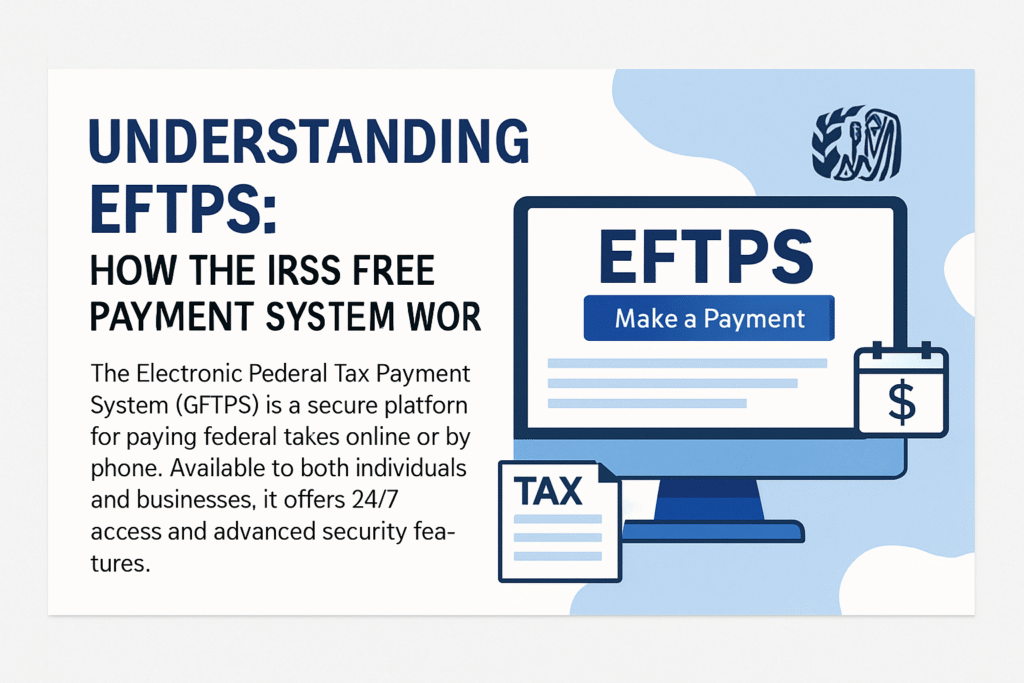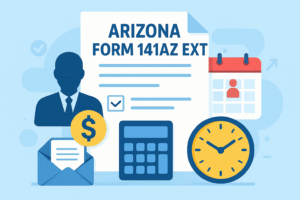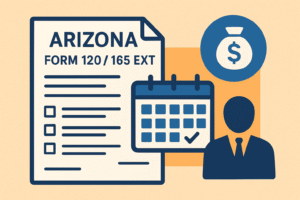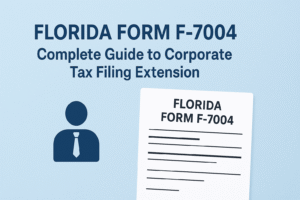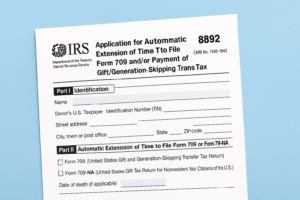The Electronic Federal Tax Payment System (EFTPS) is a secure, user-friendly platform provided by the U.S. Department of the Treasury for paying federal taxes online or by phone. Whether you’re an individual taxpayer managing quarterly estimates or a business owner responsible for payroll taxes, EFTPS offers a reliable, trackable, and free way to stay compliant with the IRS.
This comprehensive guide walks through everything you need to know about EFTPS—from enrollment and payment types to comparisons with Direct Pay, automation tips, and fraud protection strategies.
What is the EFTPS?
The Electronic Federal Tax Payment System (EFTPS) is a digital tax payment service created and maintained by the U.S. Department of the Treasury. It allows taxpayers—including individuals, businesses, tax professionals, and payroll providers—to electronically pay federal taxes using a secure internet-based platform or a voice response system over the phone.
Unlike mailing checks or using a third-party payment processor, EFTPS is direct, government-managed, and completely free. The system was developed to modernize tax collections, enhance security, reduce processing errors, and ensure proper tracking of payments through official channels. It supports a variety of tax types, including income taxes, estimated taxes, payroll taxes, excise taxes, and more.
EFTPS offers:
- 24/7 online access
- Scheduled payments up to 365 days in advance
- Real-time verification
- Payment history and receipts
- A PIN and password-based login system for enhanced security
Who can use EFTPS to pay taxes?
EFTPS is available to anyone who needs to pay U.S. federal taxes—and is particularly vital for those with recurring or business-related obligations.
Eligible users include:
- Individual taxpayers (e.g., paying 1040 balance due or estimated taxes)
- Self-employed individuals and freelancers
- Sole proprietors
- Corporations (C corps, S corps)
- LLCs and partnerships
- Non-profits
- Estate and trust entities
- Tax professionals and accountants
- Third-party payroll processors
- Government agencies
There are no income thresholds or filing criteria to restrict access—anyone with a Taxpayer Identification Number (TIN) (SSN or EIN) can enroll and use EFTPS.
Is EFTPS mandatory?
For Individuals:
No, EFTPS is optional for individual taxpayers. You may choose between EFTPS, Direct Pay, credit/debit card processors, or paper checks (if accepted).
For Businesses and Employers:
Yes, EFTPS is mandatory for businesses that are required to deposit federal employment taxes. Since 2011, the IRS has phased out Form 8109 coupon books, meaning businesses can no longer mail in tax deposits via check.
Businesses must use EFTPS or a same-day wire transfer for:
- Employment taxes (Forms 941, 940, 943, 944)
- Corporate income tax (Forms 1120, 1120-S)
- Excise taxes (Forms 720, 2290)
- Trust fund recovery payments
Non-compliance with electronic payment rules can lead to IRS penalties, even if the tax payment is submitted on time by other methods.
What payment options does EFTPS offer?
EFTPS provides multiple options for tax filers to submit payments securely:
1. ACH Debit (Direct Debit)
- You authorize the U.S. Treasury to debit your bank account.
- Most common and recommended method.
- No processing fees.
- Can schedule future payments.
2. ACH Credit
- You instruct your bank to initiate the payment.
- Requires coordination with your financial institution.
- You must format the payment using the NACHA CCD+ format, which may require technical setup.
3. Same-Day Wire Transfer
- Used in urgent cases where tax deposits are due today.
- Must be arranged directly through your bank by its daily cutoff time.
- Not available on the EFTPS web interface—only processed via financial institutions.
EFTPS does not support payments by credit/debit card—that’s handled by IRS payment processors, which usually charge convenience fees.
Should employers set up an EFTPS account?
Yes, every employer should establish an EFTPS account as early as possible—even if they use a payroll provider. Here’s why:
Benefits for Employers:
- Schedule biweekly, monthly, or quarterly payroll tax deposits
- Avoid IRS penalties for late or non-electronic deposits
- Access detailed payment history, useful for audits or reconciliations
- Get confirmation numbers for every transaction
- Correct or cancel payments before the effective date (if needed)
- Enhanced security compared to mailing checks or third-party submissions
Even if your payroll service handles deposits, you remain legally responsible. Having direct access to EFTPS allows employers to verify deposits are made correctly and timely.
How does EFTPS compare to IRS Direct Pay?
Both are IRS-run systems, but they cater to different needs:
| Feature | EFTPS | Direct Pay |
| Who can use it | Individuals & Businesses | Individuals only |
| Enrollment required? | Yes (PIN by mail) | No |
| Scheduling option | Up to 365 days in advance | Pay immediately or schedule for next day |
| Tax types supported | All federal tax types | Limited to 1040-related payments |
| Security | PIN + password | Identity verification (SSN, AGI, filing status) |
| Record retention | View 16 months of history | Short-term, no login for record |
| Change bank info | Saved to account | Must enter each time |
Verdict:
- Use EFTPS if you’re a business, schedule taxes in advance, or need historical records.
- Use Direct Pay for quick, one-time payments for individual tax filings.
What are the other ways to pay taxes and why is EFTPS better?
Other IRS-accepted tax payment methods include:
- Mailing a check with a payment voucher (Form 1040-V)
- Credit or debit cards via IRS partners (e.g., PayUSAtax, ACI Payments)
- Cash at participating retail locations (e.g., Walmart, 7-Eleven)
- Same-day wire transfers
Why EFTPS is better:
- Free of charge
- Government-secured infrastructure
- Full audit trail and payment confirmation
- Can handle all IRS form types
- Allows future scheduling and cancellations
- No dependence on third-party processors
What payments can be made via EFTPS?
EFTPS supports over 30 types of federal tax payments, including:
| Tax Type | Common Forms |
| Individual Income Tax | 1040, 1040-ES, 1040-V |
| Employment Taxes | 941, 940, 943, 945 |
| Corporate Income Tax | 1120, 1120-S |
| Excise Taxes | 720, 2290 |
| Estimated Taxes | 1040-ES, 1120-W |
| Installment Payments | Monthly or periodic amounts |
| Estate & Gift Taxes | 706, 709 |
| Penalty and Interest | As billed by IRS |
| Trust Fund Recovery Penalty | Assessed TFRP cases |
How do you enroll in the EFTPS?
Enrollment Process:
- Visit www.eftps.gov.
- Click “Enroll.”
- Provide:
- Taxpayer Identification Number (SSN or EIN)
- Name as it appears on IRS records
- Bank account and routing numbers
- Business or personal contact details
- Within 7 business days, you’ll receive:
- PIN via U.S. Mail
- EFTPS enrollment confirmation letter
- Visit the site again to create your password and complete activation.
How do you make a payment on EFTPS?
- Go to www.eftps.gov.
- Log in using TIN, PIN, and password.
- Click “Make a Payment.”
- Choose the appropriate tax form, tax period, and payment type.
- Enter your payment amount and date.
- Confirm and submit. You’ll receive a confirmation number.
- Print or save the confirmation for your records.
Deadline Reminder: Schedule payments by 8 p.m. ET at least one calendar day before the due date.
Can state taxes be paid through EFTPS?
No. EFTPS is only for federal taxes. For state income, sales, or payroll taxes, use your state’s department of revenue portal or employer services system.
Do businesses need a separate EFTPS account?
Yes. Even if the business is a sole proprietorship, it must enroll separately using its EIN to make federal payroll or business tax payments.
An individual’s EFTPS account based on an SSN cannot be used for business-related taxes.
Can you automate recurring EFTPS payments?
Yes and no.
- You can manually schedule recurring payments—up to 365 days in advance.
- However, EFTPS does not support automatic drafts like a subscription model.
- Each payment must be individually scheduled.
Can sole proprietors enroll in EFTPS as a business?
Yes. If a sole proprietor has an EIN, they should create a separate EFTPS business account for:
- Payroll tax deposits
- Business-related estimated taxes
- Form 941 or 940 deposits
They can also keep a separate individual EFTPS account under their SSN for Form 1040 or 1040-ES payments.
Is EFTPS enrollment mandatory for corporations?
Yes. All corporations are required to make tax payments electronically, and EFTPS is the IRS’s preferred method.
Failing to use EFTPS can result in:
- Penalties
- Loss of compliance status
- IRS notices or enforcement action
How do you change a bank account in EFTPS?
- Log in at www.eftps.gov.
- Click “My Profile”.
- Select “Financial Institution Information.”
- Edit your routing and account numbers.
- Confirm and save.
Make changes before any scheduled payments, ideally 1–2 business days in advance.
Is there a fee to use EFTPS?
No. EFTPS is a free service. Unlike credit/debit card processors (which charge 1.87%–2.35% in fees), EFTPS is cost-free, regardless of the number or size of payments.
Can I make an EFTPS payment without a PIN?
No. A PIN is required to access and use EFTPS. If you’ve lost your PIN:
- Request a replacement by contacting the EFTPS Customer Service.
- A new PIN will be mailed to your registered address.
- This process can take up to 10 business days.
How can I verify my EFTPS payment status at any time?
Once logged in, you can:
- View past payments
- Check status of scheduled, pending, or completed payments
- Print official confirmations
- Access 16 months of payment history
This feature is extremely useful for compliance, audits, or IRS correspondence.
Can I cancel an EFTPS payment?
Yes. You may cancel a payment up until 8 p.m. ET on the day before the scheduled debit date.
To cancel:
- Log in → Go to “Payments” → Select the payment → Click “Cancel Payment.”
If the payment has already been processed, you must contact the IRS to resolve the issue.
How can I detect and avoid EFTPS scams?
Warning Signs of EFTPS Scams:
- Phone calls claiming to be the IRS demanding payment
- Emails asking for EFTPS credentials or personal info
- Threats of arrest or lawsuit unless you pay immediately
- Requests to pay via gift cards or cryptocurrency
How to Stay Safe:
- Never share your PIN, password, or banking info over phone or email.
- Only access EFTPS via www.eftps.gov.
- The IRS never initiates contact by email or text for payments.
Report phishing to: phishing@irs.gov

